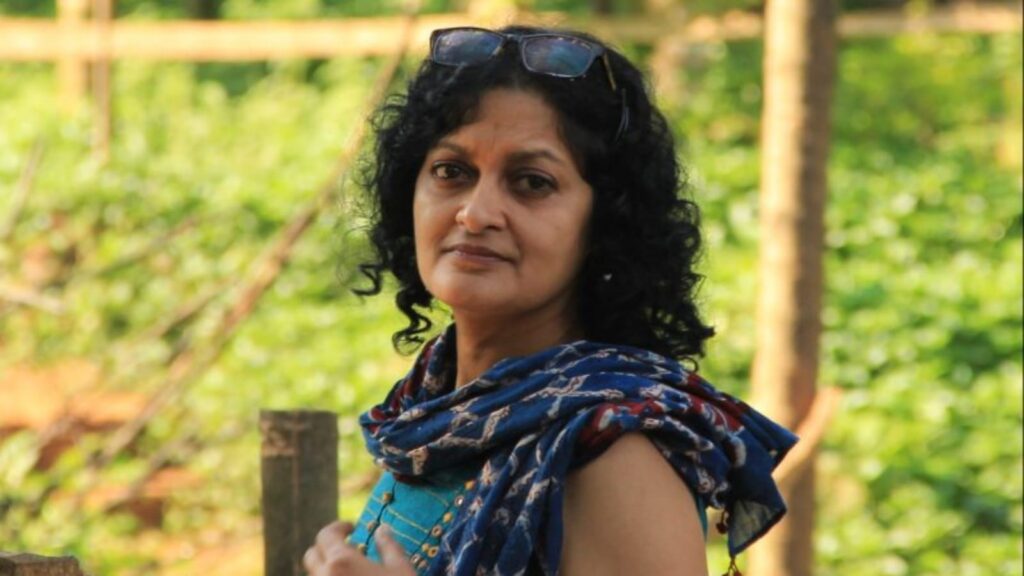From a dovecote at Lalbagh to the old clubs of the city, if you are near a part of Bengaluru that is of any significant age, Meera Iyer has probably helped document it in her books.
Iyer’s first work, Discovering Bengaluru, is one of the more comprehensive and accessible English resources published in recent years, dealing broadly with the history of most parts of the city that one might see as a pedestrian.
Her latest, India in Triangles, co-authored with Shruthi Rao, deals with the history of the Great Trigonometrical Survey of India, an initiative in which Bengaluru also played a part.
Looking back on her memories of the city, Iyer told The Indian Express on Monday that she spent a good chunk of her childhood in Bengaluru. “I have stayed in Basavanagudi, Austin Town, Frazer Town… So I feel like I have personal connections in many different parts of the city which have many different cultures.”
Compiling hyperlocal history
Iyer, who also serves as the convenor of the Indian National Trust for Art and Cultural Heritage (INTACH) in the city, added, “I had come back to Bangalore in 2005 and used to travel on the weekends to places in and around the city. I remember going to the Devanahalli fort. It was a place full of historical importance, and yet there was nobody there to tell us anything about the place, no information on hand. At that point, I wanted to be in a place where I could change that.” By 2007, she had begun volunteering with INTACH.
As Iyer recalled, INTACH had also begun conducting heritage walks in the city in 2008, around one each month. She said, “At that time, there weren’t so many people doing heritage walks. A lot of people who came on our walks said we ought to write a book about all this… It came to fruition in 2019 when the book was actually published.”
The book took four years to write, with the research beginning even earlier. Iyer said, “Of course, some great books have been written about Bangalore. Janaki Nair has written The Promise of the Metropolis, Fazlul Hasan has written a really popular and accessible history (Bangalore Through the Centuries). What we wanted was a book about the neighbourhoods, a hyperlocal kind of history. Something that is accessible to people, but when you read it, gives an idea of the evolution of the city.”
Story continues below this ad
The research work involved poring over the archives in the Vidhana Soudha and sourcing information from abroad. She said, “You have access to information on the internet, so it makes things easier, but you still have to go back to the archives as not everything is available. It is such a connected world now, I can reach out to someone who is studying in a university in the US, etc, and ask them to find some information, because very often they have information that we do not have in our libraries.”
Several sections of the book were also worked on by other contributors, including Krupa Rajangam, Hita Unnikrishnan, B Manjunath, S Karthikeyan, and Harini Nagendra.
Bengaluru ‘littered with remnants of Trigonometrical Survey’
A key site that played its part in India in Triangles – the book was released in June – was the Great Trigonometrical Survey (GTS) Observatory off the Hennur-Bagalur Road. Iyer added, “The city is littered all over with remnants of this survey and traces. Many have been lost, but there is still a sizeable number.”
In 2024, her co-author Shruthi Rao reached out regarding collaborating on the book. Recalling the research process, she said, “I really loved the process of going through the archives… We are blessed with the ability to read reports that (William) Lambton (the British infantry officer who initiated the Great Survey) wrote after his early surveys in Bangalore and Chennai. A lot of the documents have also been digitised.”
Story continues below this ad
But in Bengaluru, as elsewhere, history does not always stand protected. The GTS Observatory was heavily damaged and broken, with the land it stood on being subject to a property claim. Iyer said, “That was something that really shattered us when we were working on the book. But the demolition… There were people who lived there who tried to stop it. I think we should hold on to that. There were people who cared enough. That is our hope, that despite everything that happens, there are people who understand that such structures are important to our city.”
She added, “Urbanisation can proceed without erasing our past. Development does not have to be at the cost of heritage. If you look at New York, there are several hundred protected sites. It is not that we should import their lessons exactly, but we can be modern and still retain our past.”

